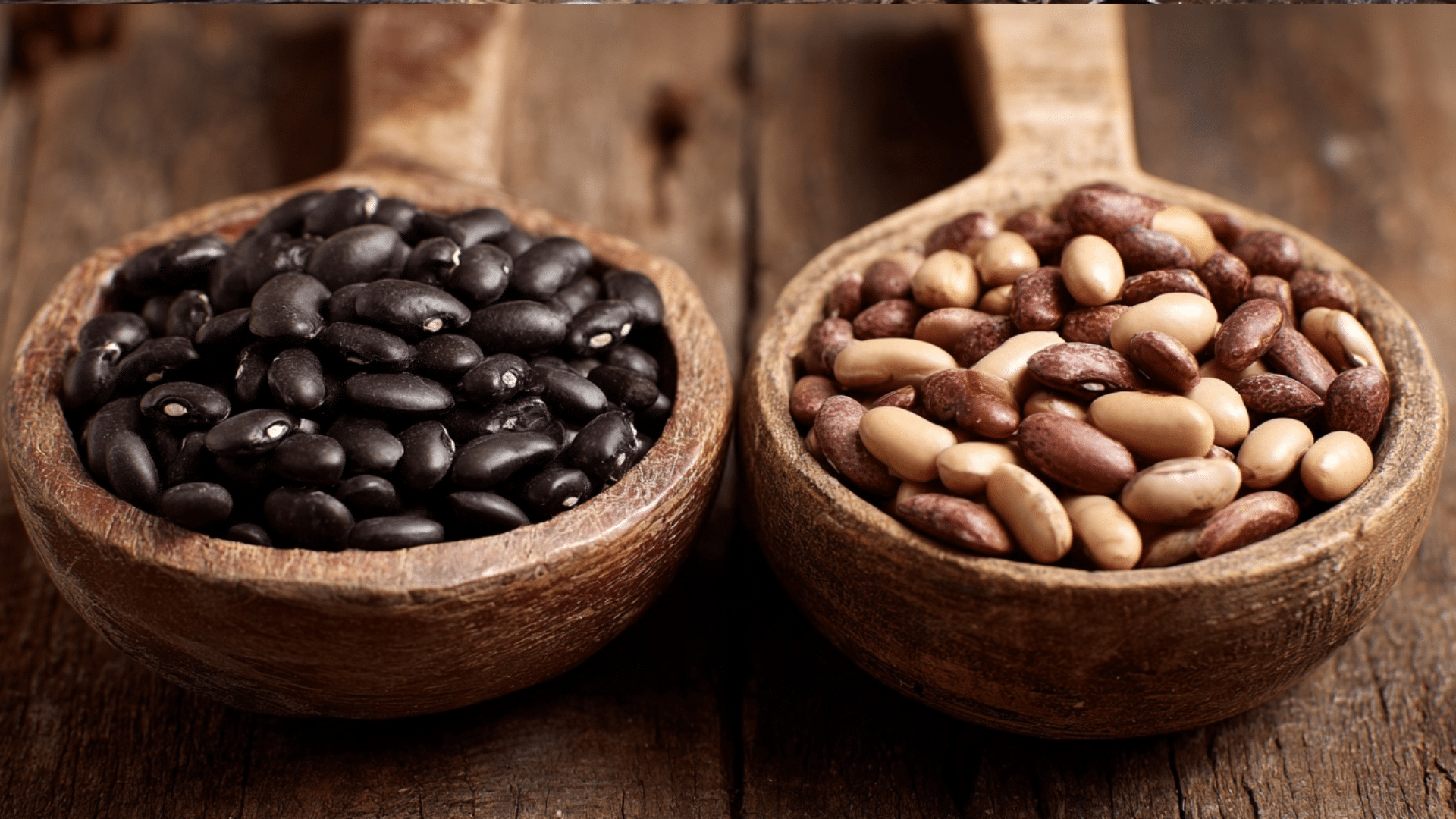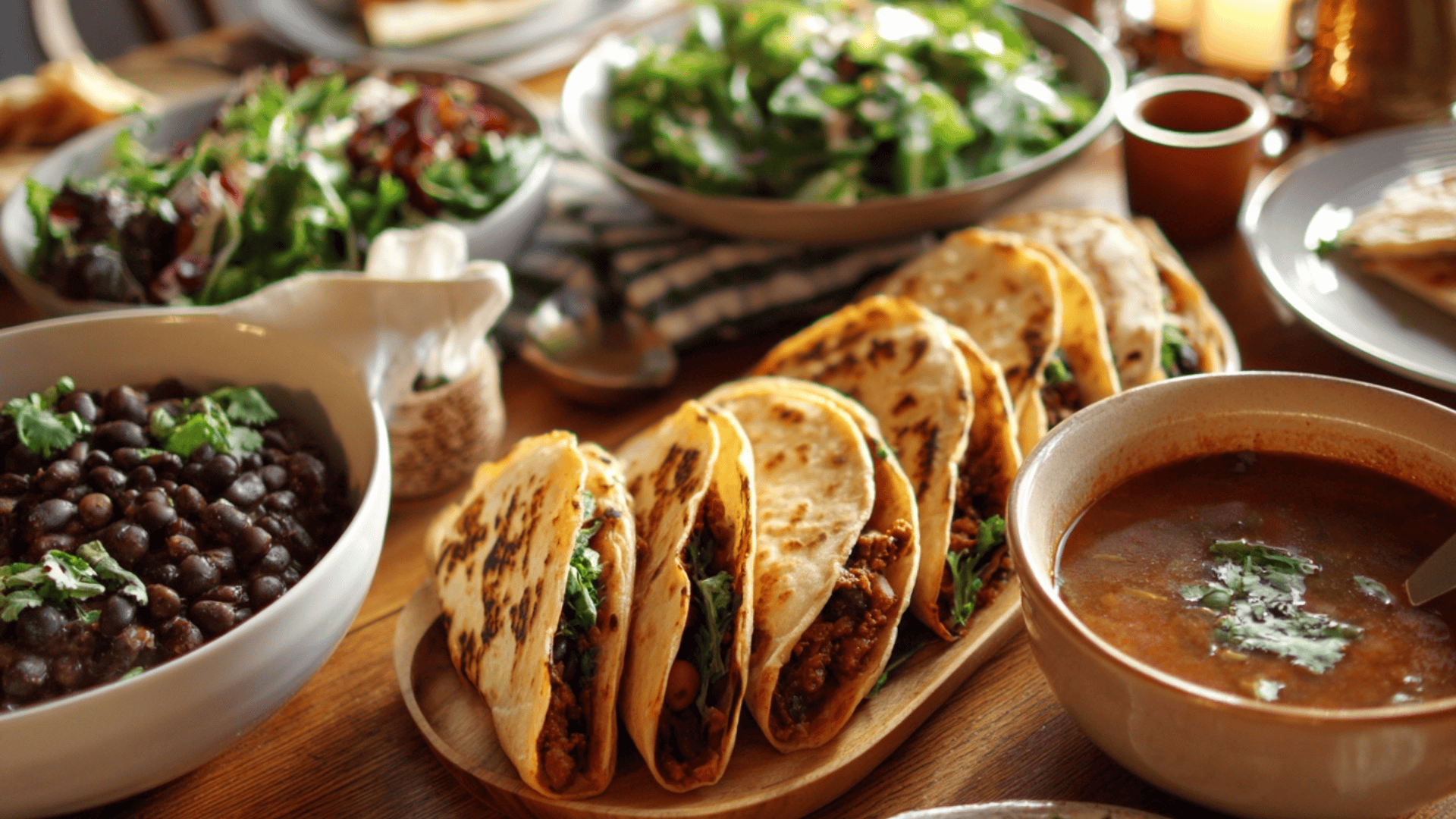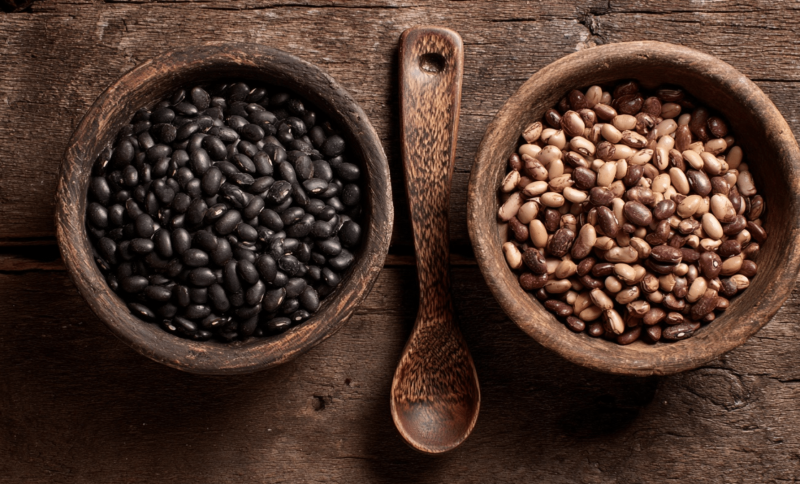If you’ve ever stood in the grocery aisle staring at bags of beans and wondering, Are black or pinto beans healthier?, you’re not alone.
Beans are one of the most affordable, filling, and nutrient-packed foods you can add to your diet.
They’re loaded with protein, fiber, vitamins, and minerals, making them a smart choice for almost anyone.
But when it comes to black beans vs pinto beans, the decision isn’t always easy. Both offer big health benefits, yet they shine in slightly different ways.
Let’s break down their nutrition in simple terms, so you’ll know which bean best fits your health goals.
Why Compare Black Beans and Pinto Beans?
Beans are a staple in many cuisines around the world. They’re not just filling, they’re also great for heart health, digestion, and even managing blood sugar.
However, when it comes to black beans vs. pinto beans, the choice may depend on what you’re looking for.
Some people want more protein. Others need more fiber. And some are just after the one that tastes better in their favorite dishes.
By comparing them side by side, we can figure out which one works best for different needs.
Black Beans vs Pinto Beans: Nutritional Comparison

Let’s get to the big question: Are black or pinto beans healthier? To answer that, let’s look at the numbers. Below are average values for 1 cup of cooked beans (about 170 grams).
1. Calories and Macronutrients
Black beans and pinto beans provide protein, fiber, and energy, but their calorie and carbohydrate counts differ slightly.
| Nutrient (per 1 cup, cooked) | Black Beans | Pinto Beans |
|---|---|---|
| Calories | ~227 | ~245 |
| Protein | 15 g | 15 g |
| Carbohydrates | 41 g | 45 g |
| Fiber | 15 g | 15 g |
| Fat |
Takeaway: Both beans are nutritious, but black beans have fewer carbs, while pinto beans provide slightly more calories and energy.
2. Vitamins and Minerals
Both black and pinto beans are nutrient-rich, but each shines with unique vitamins and minerals that support overall health.
Black Beans
- Higher in magnesium, which supports energy and muscle function.
- Rich in folate, important for cell health and pregnancy.
- Packed with antioxidants that give them their dark color.
Pinto Beans
- Higher in manganese, which supports bone health and metabolism.
- More thiamine (vitamin B1) is essential for the proper functioning of the nervous system.
- Good source of iron, though black beans aren’t far behind.
Takeaway: Black beans are rich in antioxidants, while pinto beans offer additional B vitamins and minerals for a balanced diet.
3. Fiber and Digestion
Both black and pinto beans provide approximately 15 grams of fiber per cup, which accounts for nearly half of the recommended daily intake.
This impressive amount of fiber helps regulate digestion, supports healthy cholesterol, and promotes a lasting sense of fullness.
Black beans also contain more resistant starch, a unique carbohydrate that feeds good gut bacteria.
Pinto beans, however, tend to be easier on the digestive system, making them a gentler option for some people.
Takeaway: Both beans are fiber-rich; black beans boost gut bacteria with resistant starch, while pinto beans are gentler on digestion.
4. Antioxidants and Health Benefits
Beans are rich in protective compounds, but black and pinto beans differ slightly in their antioxidant strength and heart benefits.
-
Black Beans: Their dark color indicates they’re packed with anthocyanins, powerful antioxidants that combat inflammation and promote long-term health.
-
Pinto Beans: They contain fewer antioxidants but may help lower LDL (bad) cholesterol levels, thanks to their high fiber content.
Winner: For antioxidants, black beans take the crown.
5. Taste and Texture: A Matter of Preference
Nutrition aside, let’s talk flavor and texture:
-
Black beans are firm, dense, and slightly earthy in taste. They hold their shape well, making them perfect for salads, soups, or grain bowls.
-
Pinto beans are creamier and softer with a mild, nutty flavor. They mash easily, which is why they’re often used in refried beans or burritos.
Cooking Tip: For a heartier texture, opt for black beans. If you love creamy, comforting dishes, pinto beans may be your best friend.
6. Are Black or Pinto Beans Healthier for Weight Loss?
Both beans are great for weight loss since they’re filling, nutrient-dense, and naturally low in fat. Here’s a closer look:
| Bean Type | Weight Loss Advantage | Why It Helps |
|---|---|---|
| Black Beans | Slightly lower in calories and carbs | Makes them a bit more weight-loss-friendly |
| Pinto Beans | Creamier texture increases satisfaction | May help with portion control and reduce overeating |
Takeaway: Both support weight loss when eaten in balanced meals. Black beans have a slight calorie edge, but the differences are minimal.
7. Black Beans vs Pinto Beans for Blood Sugar
Both beans are excellent choices for individuals managing blood sugar levels. Their high fiber content slows down how quickly sugar enters your bloodstream.
- Black Beans: Have a lower glycemic index, meaning they cause a smaller spike in blood sugar.
- Pinto Beans: Still good for blood sugar control, but slightly higher glycemic index than black beans.
Winner: Black beans are the better option for blood sugar management.
8. Which Beans are Better for Heart Health?
Beans, in general, are beneficial for heart health due to their high fiber, potassium, and magnesium content.
- Black beans’ antioxidants can help protect arteries.
- Pinto beans’ fiber can help reduce cholesterol levels.
Takeaway: Both support a healthy heart, so you can’t go wrong with either.
Easy Ways to Use Black and Pinto Beans

Beans are versatile, tasty, and simple to add to everyday meals. Here’s how you can enjoy both black beans and pinto beans.
1. Black Beans
Black beans are firm, flavorful, and retain their shape well, making them ideal for hearty dishes and fresh, vibrant recipes.
- Add them to tacos or burrito bowls.
- Toss into chili for extra protein.
- Mix with corn and avocado for a quick salad.
Black beans are a great way to boost both flavor and nutrition while keeping meals filling and balanced.
2. Pinto Beans
Pinto beans are creamy and mild, which makes them easy to blend into comfort foods and classic Mexican-inspired recipes.
- Use them in refried beans for quesadillas.
- Add them to soups or stews for a creamy texture.
- Smash them on toast with a little salsa for a quick snack.
Pinto beans bring a smooth texture and satisfying flavor, making them perfect for warm, comforting dishes that everyone enjoys.
Overview of Black Beans vs Pinto Beans
So, after all this, are black or pinto beans healthier? The truth is that both are excellent choices, and the better option really depends on your needs and preferences.
Choose black beans if you want a boost of antioxidants, better blood sugar control, or a firmer texture in your meals.
On the other hand, pinto beans are ideal if you prefer a creamier texture, need a little more B vitamins, or love dishes like refried beans.
At the end of the day, you don’t have to pick just one; enjoying both adds variety, balance, and plenty of health benefits to your diet.
Final Thoughts
Beans are among the healthiest and most affordable foods you can add to your diet.
Choosing black beans or pinto beans means you are providing your body with plant-based protein, plenty of fiber, and a wide range of vitamins and minerals that support heart health, digestion, and sustained energy.
Both varieties are versatile, delicious, and easy to incorporate into everyday meals.
Black beans offer a firmer texture and powerful antioxidants, while pinto beans provide creaminess and extra B vitamins.
Instead of picking just one, enjoy both to maximize flavor and nutrition. Start adding beans to your weekly menu today and feel the difference.













